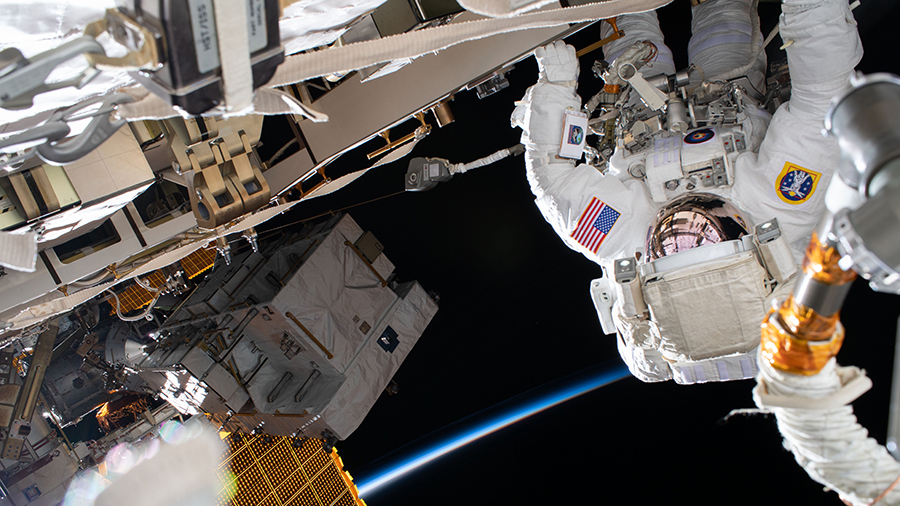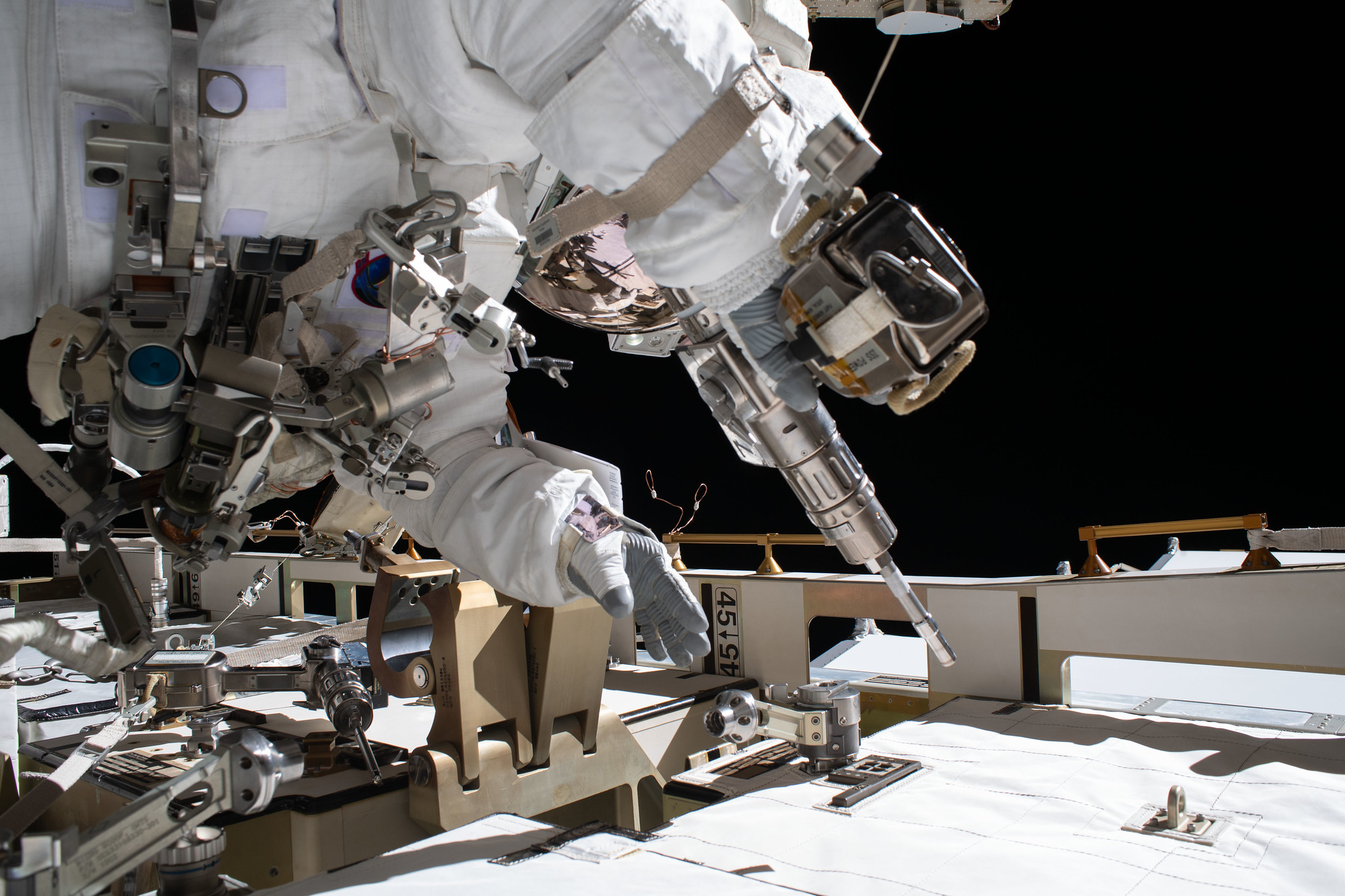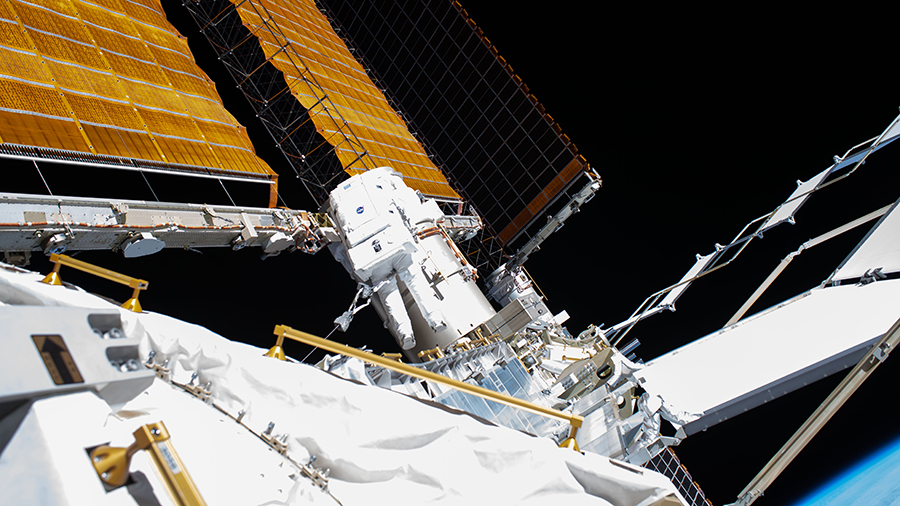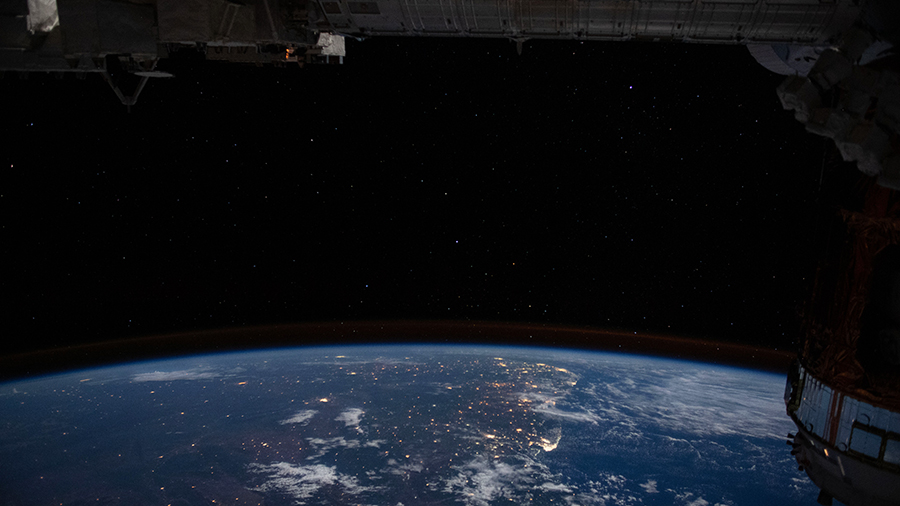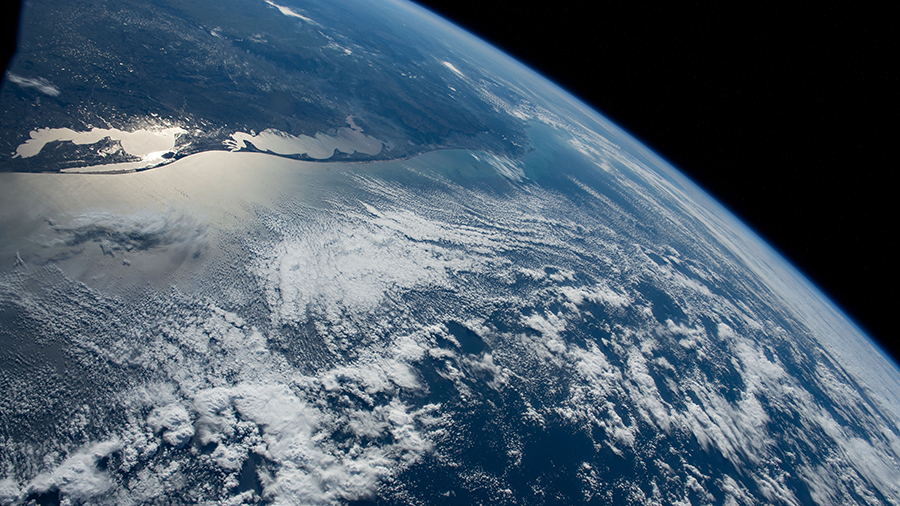
NASA Television coverage of today’s spacewalk with NASA astronauts Robert Behnken and Chris Cassidy is now underway and available on the agency’s website.
The crew members of Expedition 63 are preparing to venture outside the International Space Station for a spacewalk expected to begin at approximately 7:35 a.m. EDT and last as long as seven hours.
The crew is in the airlock and have donned their suits in preparation to exit the airlock and begin today’s activities.
Behnken and Cassidy will perform a number of tasks designed to upgrade station systems. Their first task will be to install a protective unit to store tools for use by the Canadian Space Agency’s Dextre robot. The storage unit also includes two Robotic External Leak Locator (RELL) units that Dextre can use to detect leaks of ammonia, which is used to operate the station’s cooling system.
The astronaut duo then will work on removing two lifting fixtures at the base of station solar arrays on the near port truss, or backbone, of the station. The “H-fixtures” were used for ground processing of the solar arrays prior to their launch.
They then will move on to work to prepare the outside of the Tranquility module for the arrival later this year of the Nanoracks commercial airlock on a SpaceX cargo delivery mission.
Finally, they are scheduled to route ethernet cables and remove a lens filter cover from an external camera.
Leading the mission control team today is Flight Director Allison Bolinger with support from Sandy Moore as the lead spacewalk officer and Canadian Space Agency astronaut Joshua Kutryk as the point of communications between the spacewalkers and Earth, a position known as the capsule communicator, or CAPCOM.
Learn more about station activities by following the space station blog, @space_station and @ISS_Research on Twitter as well as the ISS Facebook and ISS Instagram accounts.



